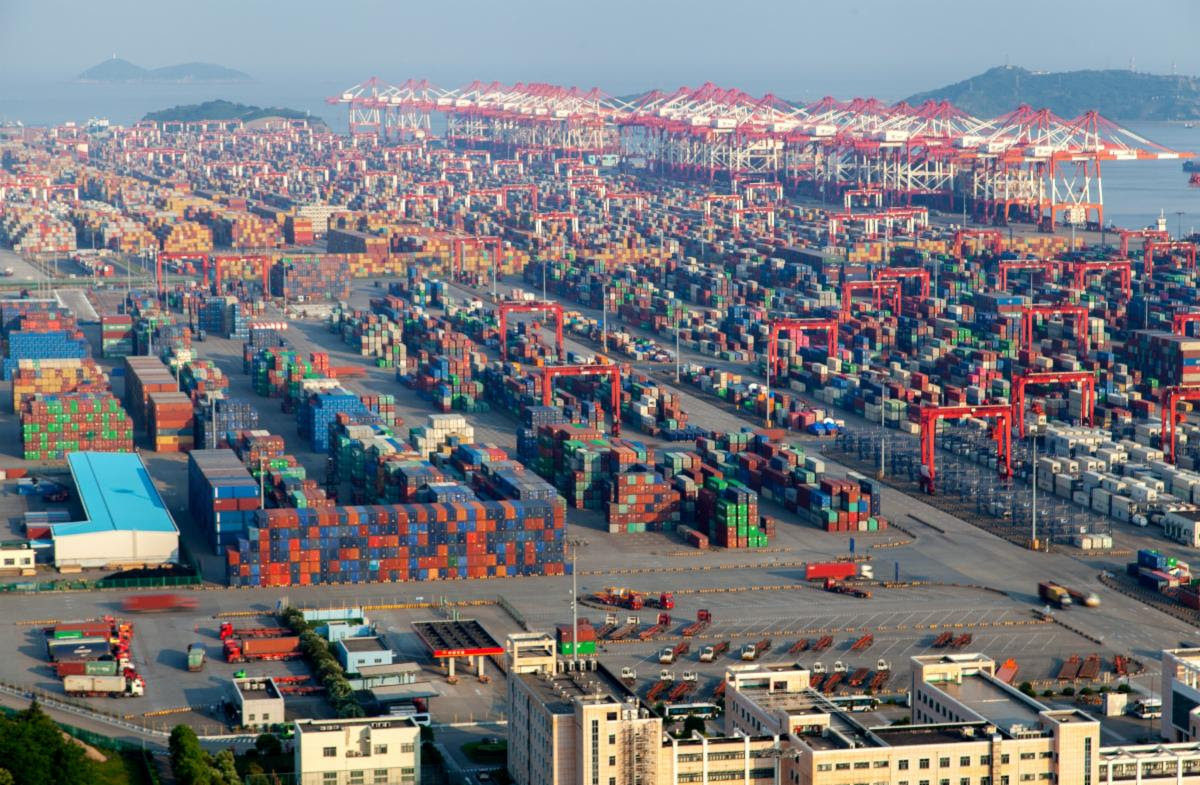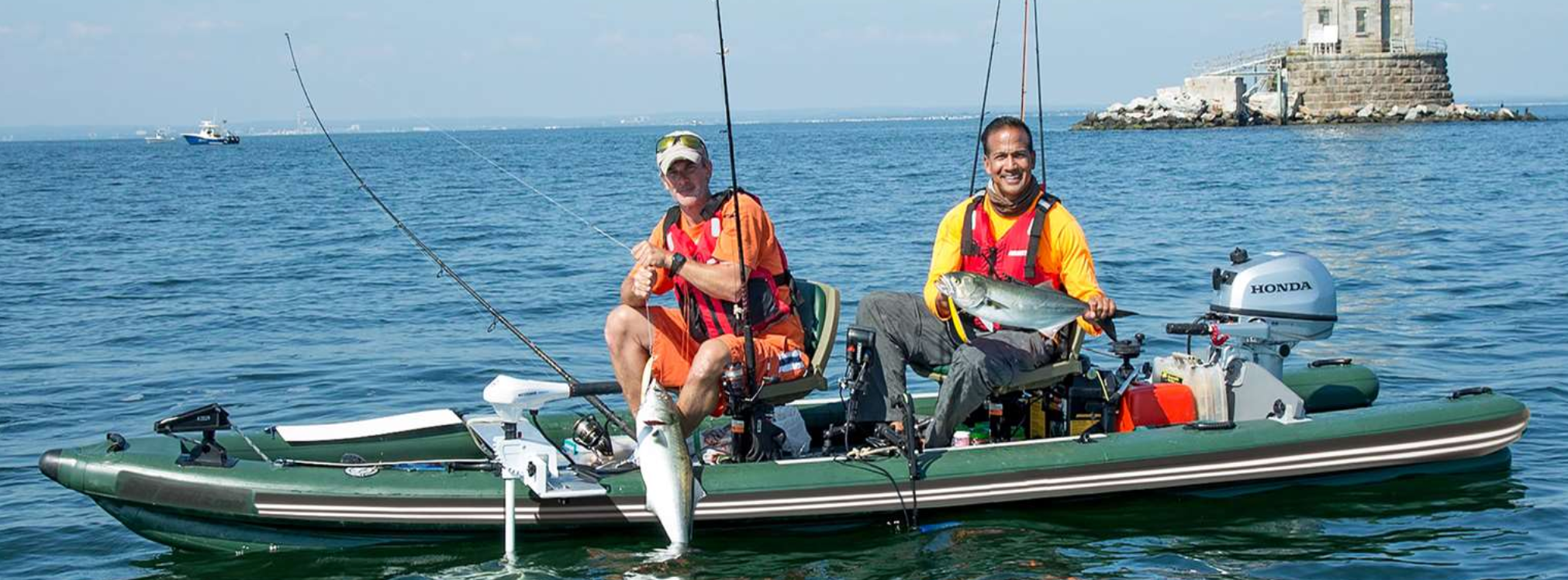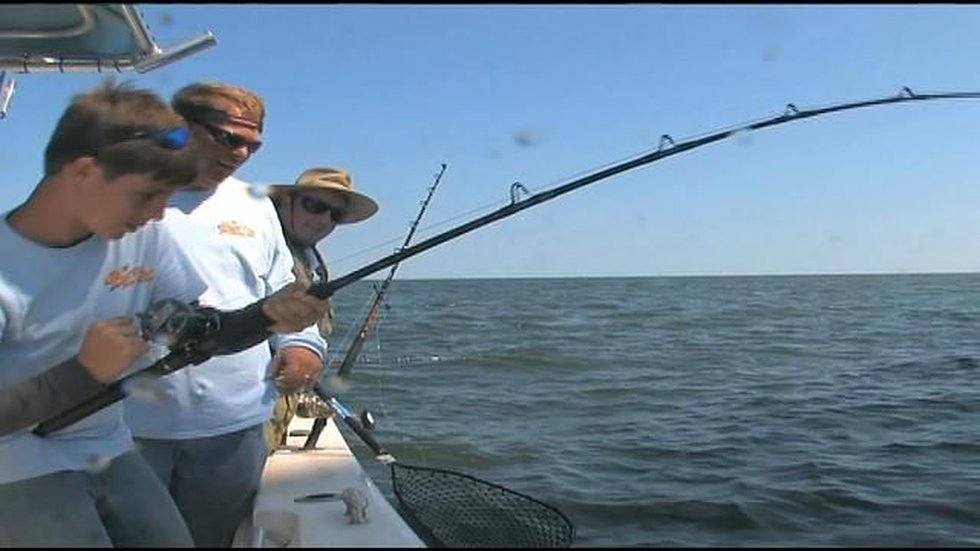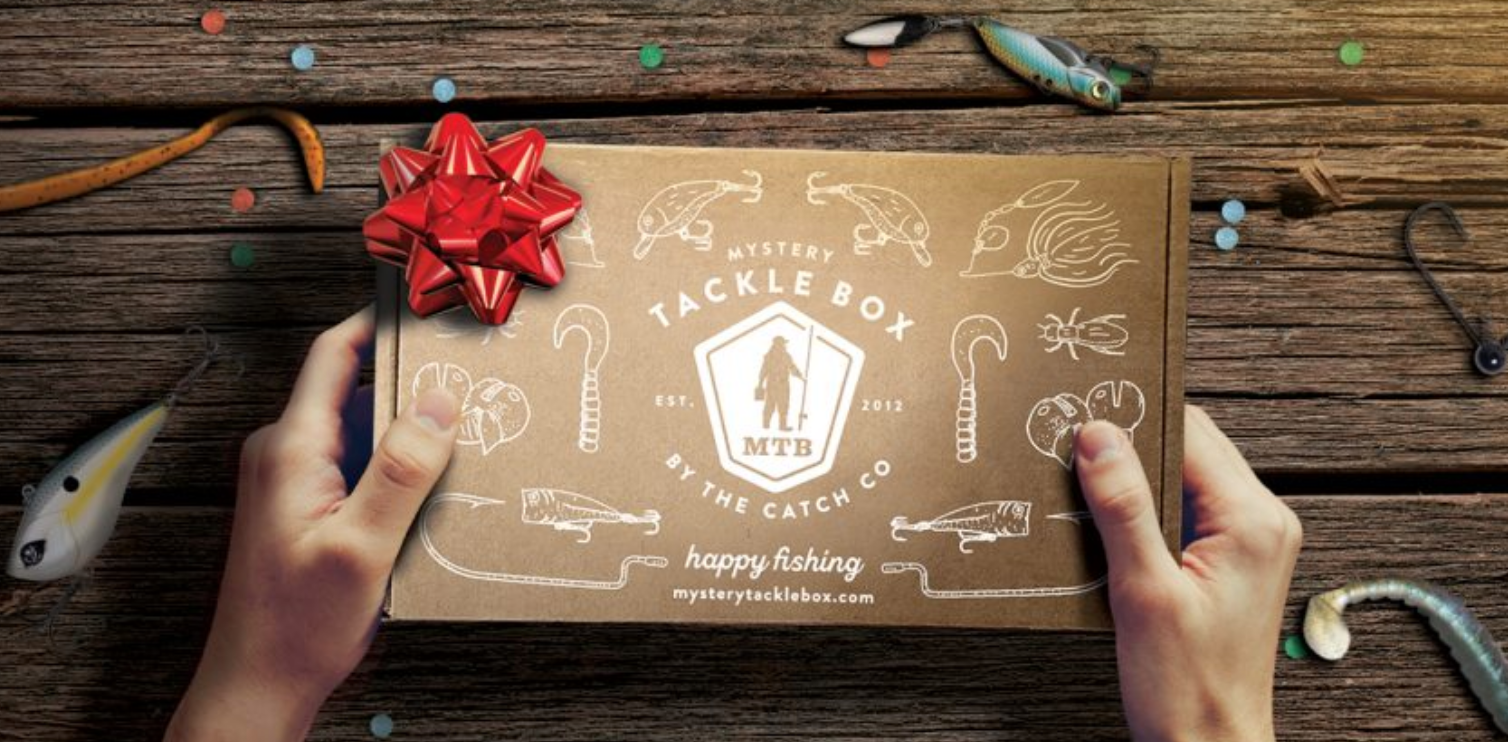The Inside Story of Why You Have to Wait and Pay More
Fishing tackle is generally not thought of as being very high on the consumer goods food chain. Nevertheless, it’s very much like the canary in the coal mine – and it is a proxy for what is happening in the boating industry and the general economy, as well. The supply chain challenges that affect the lowly plastic worm with barbed hook are the same ones that limited our supply of boats, engines and many items of boating equipment. Find out what is going on, how it is affecting pricing and how long it might last.
According to the National Retail Federation, import volumes at U.S. ports recently reached the highest level since the organization began tracking the data in 2002. Terminal congestion has resulted in idle vessels at ports on both coasts. Ocean carriers are spending an increasing number of days at anchor or adrift outside of U.S. ports, waiting for available berths. Once cargo is finally offloaded, it hits another roadblock—the trucking industry’s shortage of drivers and chassis. Rail companies are also experiencing labor problems as thousands of workers let go early in the pandemic have been slow to return.
“This remarkable, sustained import surge is pushing the supply chain to new levels,” Port of Los Angeles Executive Director Gene Seroka said during a press briefing. “Warehouses are overflowing, rail yards and carriage are maxed out. Chassis and containers continue to be hard to come by. Ships are coming in and waiting at anchor to get worked, and factories are behind in orders, even though output is at record levels. This incredible sustained demand has everyone pushing at top speed, yet we still have much more work to do.”
A Global Problem
Supply chain congestion has been just as bad or worse across Asia. Factories and port terminals in China, Vietnam, and elsewhere have been plagued with closures due to COVID-19 outbreaks and subsequent government lockdowns. In addition, China began enforcing strict, “zero-tolerance” COVID restrictions for arriving vessels. The number of idle ships at China’s ports, such as Ningbo and Yantian, continues to grow.
“Within the coming months, carriers are aiming at what can at best be described as a capacity explosion on the trans-Pacific trade—good for a booming market, but [it] could lead to even worse congestion,” Alan Murphy, CEO of Sea-Intelligence Maritime Analysis, said in a recent newsletter.
A new bill introduced in Congress by Rep. Dusty Johnson, R-SD, and Rep. John Garamendi, D-Calif., aims to alleviate many of the supply chain problems for U.S. companies. The Ocean Shipping Reform Act of 2021 would revise a variety of federal regulations. However, the container carrier lobby is fighting against the legislation. The World Shipping Council warned that, “Starting a protectionist race to the bottom in the regulation of international ocean transportation is not a winning strategy for the U.S. economy.”
Tackle Industry Leaders Weigh in
How are fishing tackle manufacturers working around the many supply chain obstacles? What long-term effects will the gridlock have on the fishing industry? Are there any steps that tackle retailers can take to fill their pegs? When will fishing tackle retail return to normal?
To help answer these questions and more, Fishing Tackle Retailer spoke with Panther Martin and Sea Eagle Boats President Cecile Hoge, Jr., Temple Fork Outfitters President and CEO Frank-Paul King, Daiwa Corporation President Carey Graves, and Ben Hong, Business Partner at American Maple Inc.—Promar & Ahi USA. Here are the insights and advice that these industry leaders shared.
•To what extent are the disruptions to the global supply chain affecting the tackle industry?
Hong: Everyone is seeing much longer procurement lead times and astronomically higher landed costs, which is translating to more empty pegs at the retail level for import brands that did not anticipate the additional delays and who balked at reordering when they saw the astonishing ocean freight increases. As we speak today [at the end of September 2021], our door-to-door shipping lead time has increased from 25-30 days to anywhere from 60-120 days, depending on port congestion at both origin and landing ports. In early 2020, we were paying a little over $2,000 to get a 40-foot shipping container here from China. Today, we are paying more than $20,000 and at a much slower turnaround! Inflation is definitely here.
King: They are meaningfully impacting the industry and my company.
Hoge, Jr: The supply disruptions so far have had very little effect on our fishing lure business. It has had greater effect on our boat business.
Graves: I feel it has affected every company in our industry with shortages, delays, and higher cost of production and shipping.
•What has been the biggest problem—congestion at the ports or factories closed due to COVID-19 lockdown restrictions?
Hoge, Jr: We faced both problems last year and this year. Many of our suppliers were shut down early in the pandemic, fortunately at two different times. In our fishing lures, one supplier was shut in January, February, and March. Then, when they got up and running, our other supplier went down in May, June, and July. Because we started with good inventory levels and because we were allowed to stay open throughout the pandemic, we were able to continuously ship. We were able to fill almost all orders and we enjoyed a very large increase last year. This year, port delays and higher overall shipping costs have had more effect on our lure business, but so far we are still managing to fulfill 95% of received orders. Of course, the higher cost of air and sea freight will have a direct effect on our costs of doing business and we are increasing our prices to cover higher costs for shipping, materials, products, and labor.
Graves: The ports are the biggest problem, as they are creating delays of an extra four to eight weeks and shortages in containers going back overseas, which is creating extra delays and cost for shipping.
King: We have not had significant production problems at our factories. However, transportation continues to get worse both internationally and domestically.
Hong: Congestion at the ports has been a bigger frustration for us as ETAs and promised dates constantly get pushed back. Throughout the pandemic and more than ever, the sobering reality is that we are at the mercy of the ports and shipping carriers to deliver on their allotted schedule. In 2020, soon after we started to see these port delays intensify, we adjusted our demand planning and doubled down to increase our on-hand inventory levels to offset the longer than usual procurement cycle. We have also been fortunate to not have suffered significant order delays due to COVID factory lockdowns, as our secondary and alternative suppliers were able to step up and deliver.
•How have factories in China and elsewhere been affected by recent COVID-19 lockdowns?
Hoge, Jr: Our China suppliers are affected, but so far they have been able to keep up with the much higher demand we are experiencing. The biggest effect is that we have experienced large material and labor cost increases along with true shortages of many materials, so both price and supply are getting increasingly difficult.
Graves: Yes, I don’t know anyone that has not been affected by this. We are working with our factories to speed up production and trying to order as much as the factories will allow us to and then we just hope it shows up in a timely manner.
King: Our Chinese suppliers have not been impacted by recent COVID lockdowns. They have been more impacted by a growing global labor shortage.
Hong: The most common problem we have been hearing from our suppliers during this past year was shortages on raw materials due to lockdowns that hit major raw material suppliers or component suppliers. Although our factories may not have necessarily been shut down, when a lockdown occurs at a raw materials supplier, the ripple effect resonates down to all other dependent factories. As rolling lockdowns come and go, production lines often come to a complete halt due to lack of materials. Some of our factories have resorted to sourcing raw materials from alternative suppliers sometimes much further away, in order to secure materials and avert further delays, however mostly at a higher premium. These premiums are ultimately passed down and reflected in our FOB costs.
•Do you expect COVID-19 lockdowns will continue to be a problem for these factories?
Hong: I would assume so; as long as we are still seeing COVID spikes around the world, China will continue its strict COVID enforcement protocol as we have seen from day one of the pandemic. During the past year, we saw several major China shipping ports ordered to completely shut down due to COVID outbreaks. One week it’s a port in the North and the next week it’s a port in the South. With not much warning, these things came striking down causing major logistical delays. I wouldn’t be surprised to see this reoccur in the future.
Hoge, Jr: Yes, we expect lockdowns to impair all our suppliers’ ability to ship and to hold down prices. We are also seeing the same issues affecting suppliers in the U.S., although we do not anticipate more lockdowns in the U.S.
Graves: Yes, I feel it continues into late 2022 in all markets overseas.
•How are shipping delays affecting the fishing tackle industry in the U.S?
Graves: Demand is higher than supply, then add in delays and shortages from overseas, just simply makes everyone unhappy!
King: “Shipping” is having an impact on the industry in several ways, all of which stem from a rapid increase in demand for transportation—higher cost, delays generally, reduced predictability.
Hoge, Jr: From what we understand, delays in shipping and in filling orders are having a huge effect on many suppliers and on many companies in the U.S. However, in our case, because we have multiple suppliers, we still able to fill 95% of incoming orders.
Hong: Our dealers are telling us they are still seeing impulse buying occur on the retail level, as shortages are oftentimes leading consumers to buy whatever is in stock versus what they really had their minds set on before walking into the store. Consumers are also starting to acknowledge inflation is here as landed costs continue to skyrocket due to ocean shipping rates increasing by more than 800% since early 2020. Dealers are also reporting consumers are buying in larger quantities and especially higher ticket items in anticipation of prices going up in the future.
•Is the shipping congestion worse at ports in Asia, in the U.S., or all of the above?
King: Unfortunately, all of the above, but not limited to “ocean” transport. Rail and truck are equally/negatively being impacted.
Hoge, Jr: As far as we can tell, the delay and congestion in ports is worldwide. In our other business, Sea Eagle Boats, we have brought in over 100 containers this year and on almost every shipment, we have seen delays either in the shipment, in the shipment being picked up, in getting the shipment on a ship, in getting it to the port, in getting out it out of the port, and in finally getting it in our warehouse.
Hong: It’s been all around a challenge on both ends. Overseas, it was not rare for us to be notified of overbookings and be demanded thousands of dollars in additional fees to get our already pre-booked containers onto a scheduled sailing or be bumped to a sailing one or two weeks later. These unmerited charges were quite common and ongoing for some time during the past year, which just added more fuel to the fire of already overpriced shipping costs. On the U.S. side, West Coast port congestion is currently at all-time record highs. Much of our products come through Los Angeles–Long Beach, and as of today 97 container ships are waiting to get into the port either anchored outside the harbor or drifting in the Catalina Channel with waiting queues upwards of three weeks. We use an app called MarineTraffic to monitor our container ships’ GPS locations and the seriousness of the matter hits hard when you get a visual of all the ships stacked up outside the port.
Graves: There are issues everywhere. The U.S. ports are backed up four to six weeks. China is more of a shortage of ships and containers as they are all stuck in the U.S.
•How are the supply chain problems affecting recreational anglers and boaters?
King: Delays in product availability results in a reduction in enjoyment and, ultimately, a reduction in participation.
Graves: I feel anglers are finding product, maybe not exactly what they wanted, but they are making do.
Hoge, Jr: Yes, of course, the supply chain problems are affecting both anglers and boaters. I am guessing the problem is worse in all products that have to be shipped by containers. In our case, many of boat models have been regularly back-ordered in spite of the fact of getting and shipping container loads of boats almost every week. In these cases, the orders for boats are coming faster than the boats in containers in spite of the fact that our shipped sales doubled last year and are up almost 50% this year.
Hong: People are buying what is available, which sometimes might not be exactly what they want. Consumers are also resorting to alternative brands as their first-choice or second-choice brands might not be in stock. The brands that have inventory are winning, although they may be at a new retail benchmark due to the added extraordinary shipping costs needed to get these products landed. It’s important to note that what is in stock has probably gone up in retail price.
•If the COVID-19 lockdowns and shipping congestion persist into 2022, what long-term effect will this have on the fishing industry?
Hoge, Jr: I think there will continue to be shortages in many products next year and that will continue well into 2022. And I think that means that many companies will be unable to fill the orders on a timely basis that they presently have.
Hong: The pandemic has created a unique opportunity for our industry, as more people want to enjoy the outdoors and breathe some fresh air. New and born-again fishing participants are driving higher than normal demand in our industry at a time when unprecedented logistical crunches linger on. This imbalance of supply to demand will continue to exacerbate shortages across all categories. Basically when supply on the next hottest lure or reel runs out, replenishment could be three to six months away.
Graves: I feel that this is a strong industry and it will continue to be strong. I see demand staying strong and shortages continuing, so not much will change in 2022 vs 2021.
•What should businesses in the fishing industry be doing right now to navigate these supply chain problems?
Hong: My advice for dealers and distributors would be to keep a close eye on who has product and which brands are actually fulfilling orders. I’ve come across this scenario countless times this year: Brand X quotes a lower price than us, but is 90-120 days out, in hopes of shipping rates dropping or congestion easing up. A month or two later they find out that shipping rates almost doubled and eventually have to cancel these customer purchase orders or charge a hefty surcharge. My advice is check availability over pricing, because pricing means nothing if you have nothing to sell.
Hoge, Jr: Plan work-arounds and have multiple backups. Those who do not assume problems will be unable to work around the problems that will come up.
Graves: Buy early and work closely with your suppliers to get product.
•What advice do you have for retailers struggling to fill their pegs? Is there a faster way out than just “wait and see” for a savvy retailer?
King: Wait and see will be the death of a struggling retailer. The savvy retailers are placing orders and then managing (i.e., squeaky wheel) their product pipeline to make sure they get their fair share or more.
Graves: Follow the old saying every good retailer needs three suppliers to get them what they need. Develop relationships with them and use those relationships to help procure additional inventory needed.
Hong: Seek out and partner up with companies that have product and can ship. Otherwise you may be “waiting and seeing” for a long time, as this logistics quagmire will continue on well into 2022. Our commitment to our customers has always been to have product 100% in stock even if it means we have to pay a premium to get it. In the second half of 2020, when container rates started to creep up, we had a tough decision to make. We had to decide if we wanted to hope and wait for container rates to come down or keep the pedal to the metal and continue bringing in products. We chose the latter and doubled down our order volume to ensure we would have product when others may fail to deliver. Even though we have had to, and are still paying an arm and a leg and an organ to get products here, we have product to sell and service our customers. We are proud to say that throughout the entire pandemic our fill rates have still been in the high 90 percentile.
•Look deep into your crystal ball. When do you see American retail—particularly fishing tackle retail—back to normal?
Hong: I’m not sure if it will ever be back to pre-pandemic normal, so much has changed and taken root in the past two years. I think we are all waiting to see what the new normal looks like.
King: It’s not. Everything from how consumers purchase (online) to the allocation of their time (more recreation) to how they find community (virtually) has changed at warp speed as a result of COVID. All of these changes impact retail and offer rewards to those who can meet the buyer’s needs.
Graves: My take is that it will not get back to what we will call normal until sometime in 2023. What normal is, may be the real question.
•What about the current situation do today’s retailers—particularly tackle retailers—fail to understand or fully appreciate?
Graves: I feel that some retailers have a hard time understanding that manufacturers are doing their best to get all the inventory they can, that shortages are out of their control.
Hong: Importers, including fishing tackle manufacturers, have had a very rough past 18 months dealing with all of the logistical nightmares and exorbitant costs associated with importing products in today’s climate. Bringing in product and maintaining a high fill rate in 2021 is a much bigger challenge compared to just a few years ago. So my hope is that retailers can fully appreciate what it takes nowadays to get a product on a shelf and support those brands that can continue to deliver day in and day out. With that said, I’d personally like to acknowledge our staff and representatives at Promar & Ahi USA, who have worked extremely hard to keep our commitment and dedication to fulfilling customer’s orders at 100% during this pandemic. Our staff has worked countless hours to overcome logistical challenges this year and we will continue to invest heavily in our supply chain to assure products continue to flow uninterrupted to our customers.
•What other message do you have for U.S. tackle retailers?
Graves: Unprecedented demand coupled with unprecedented delays and shortages will end, and if we work hard together we all come away with a larger customer base.
Hong: Inflation is here, it is real…but please don’t blame the importers for the rising costs.
King: Adapt and prosper.
Editor’s Note: This article initially appeared in the November/December 2021 issue of Fishing Tackle Retailer.













